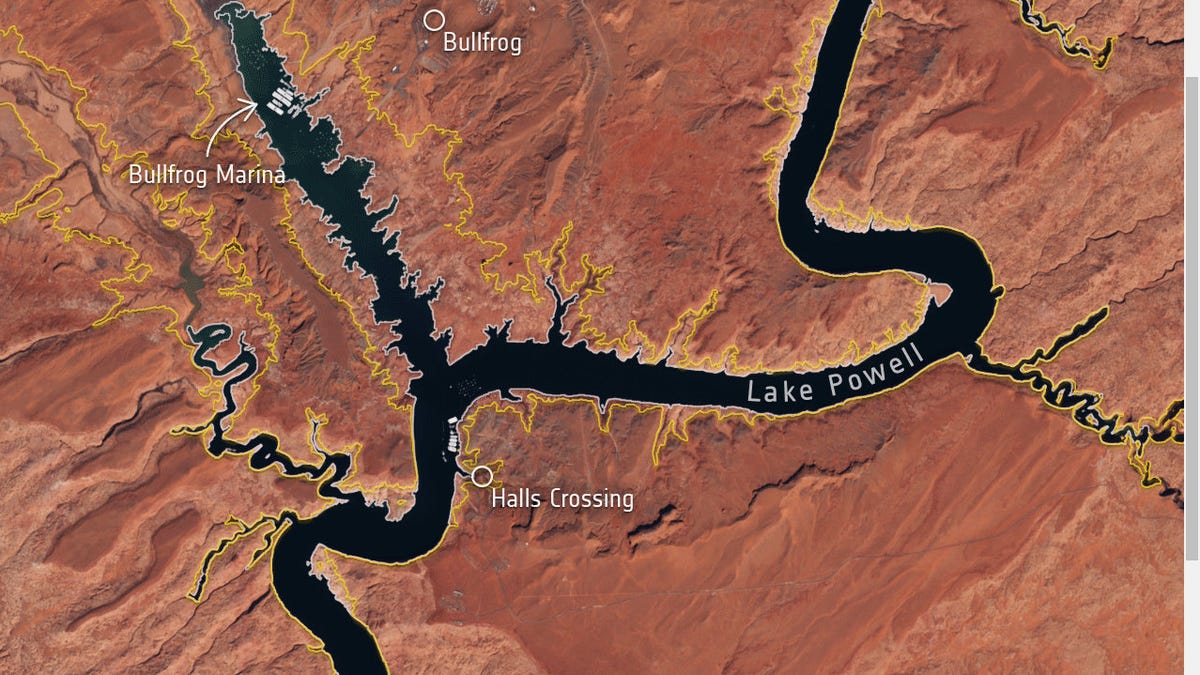Sobering Satellite Views of Western US Lake Show Impact of Severe Drought
One of the largest reservoirs in the United States is dwindling drastically.
The European Space Agency keeps an eye on happenings all around the planet, including the state of drought in the US. ESA on Monday released a series of satellite views of Lake Powell in the US Southwest that trace declining water levels as the climate crisis-fueled drought takes a toll on the reservoir.
Lake Powell is situated in Arizona and Utah along the Colorado River. "After decades of drought, water levels in Lake Powell, the second largest human-made reservoir in the United States, have shrunk to its lowest level since it was created more than 50 years ago, threatening millions of people who rely on its water supply," ESA said in a statement.
This GIF traces surface-area changes in Lake Powell from March 2018 to March 2022. The yellow line marks the shore outline from 2018.
A GIF made from images captured by the Copernicus Sentinel-2 satellite shows the lake's dramatic decline from 2018 to 2022. A yellow outline appears at the end to illustrate how much the water has retreated in just four years.
ESA said the lake had dropped in March 2022 to the lowest it's been since it was first filled in 1980. NASA's Earth Observatory also took a close look at Lake Powell in late 2021, tracing the falling water levels to two decades of drought, with especially intense drought over the last two years.
Lake Powell's lowering levels are one symptom of the larger, human-caused climate crisis. An IPCC report in February painted a grim picture for a planet "clobbered by climate change." The IPCC is the United Nations' chief climate science organization.
Satellite images of drought-stricken lakes highlight the threat to water supplies used for people, agriculture and hydroelectric power. It's bad now, but as ESA said, "Climate change is expected to make droughts more severe in the future."


